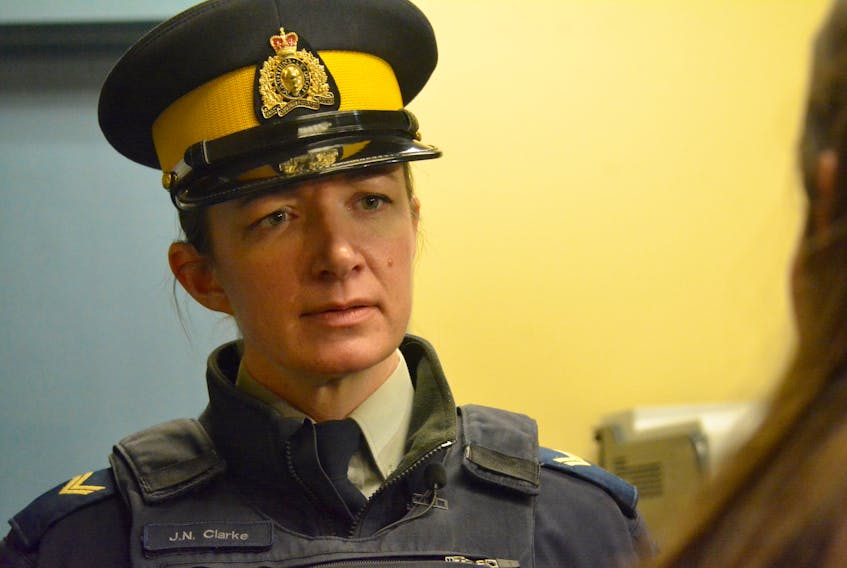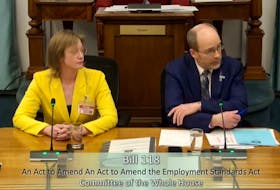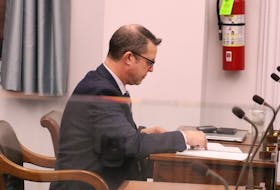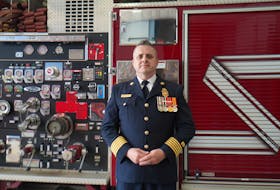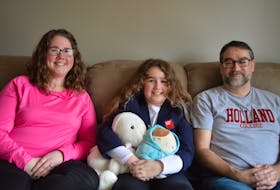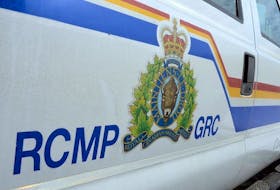
Every day, people make decisions.
Many choose to push harder on the gas pedal, watching as the needle on the speedometer rises. Or they click on cruise control, then keep clicking. Faster. Faster.
“People make small decisions, or what seems like small decisions, to go faster. They get distracted at the wheel and it ends up impacting the lives of far more people than you can imagine,” says Krista Lane, a community relations paramedic with Emergency Health Services (EHS). “The two minutes that you think you’re saving by going faster could mean a lifetime of minutes to someone that you don’t even know.
“I just want people to reflect on how dangerous a weapon that a vehicle is,” she says. “Often, we don’t really see it that way.”
First responders see it more often than they want to. And when excessive speed leads to motor vehicle collisions, the impact reaches far beyond the driver’s seat, or the passenger seat, or the seats of an oncoming vehicle with innocent passengers inside it. Death and injury take a toll on families and friends.
It also takes a toll on first responders.
Slow down
It just isn’t worth it.
The words may sound cliché, but RCMP Cpl. Jennifer Clarke says it boils down to speed and driving not mixing.
“I’ve been to many collisions where people have died. Things can change in the blink of an eye and the effect that has on so many people, it’s just shocking,” she says. “You never really get used to how that affects people, including ourselves.”
Yet people still speed - sometimes brazenly so – as evident by media releases issued by the RCMP when stunting charges are laid.
In late November, a 19-year-old driver in Chester Basin, N.S. was charged for driving 77 kilometres over the posted speed limit on Highway 103. A day later, a 20-year-old driver was charged with driving 185 km/h in an 80 km/h zone on Highway 111 in the Halifax Regional Municipality — 105 km/h above the posted limit.
“These people are clearly not aware of the potential, and they don’t have any regard for their own life or anyone else’s.” — RCMP Cpl. Jennifer Clarke
“It’s not shocking to me, it’s incredibly disappointing,” says Clarke. “These people are clearly not aware of the potential, and they don’t have any regard for their own life or anyone else’s.”
As a first responder, Clarke says collisions, including ones where excessive speed was a contributing or main factor, is not something anyone gets used to. For many first responders, these scenes can develop into post-traumatic stress disorder (PTSD).
Asked about ways first responders cope, Clarke says, “You seek support and counselling. I find, a lot of times, a safe place to talk about these things in the office or with your coworkers because no one is going to be upset or offended by what you describe. I find it therapeutic to be able to talk about stuff that most people wouldn’t be able to hear about, or would be very upset to hear.”
Every collision scene is different, yet many have similar undertones – lives ended and lives torn apart.
“It’s awful to see it again and again, but it shows how vulnerable we are to things like speed and impaired driving and things like that,” Clarke says. What makes a horrible scene more tragic is when children are involved and if people in other vehicles have become the victims of a bad decision made by the driver of another vehicle.
“Those ones I find really difficult because it’s not a decision those people made, it was someone else’s choice. And that someone else often walks away,” she says. “Those are tough.”
Reflecting
“Telling someone that their favourite person has passed away is something you never get used to," says Const. Chad Morrison of Nova Scotia RCMP Traffic Services. "We grieve for the victims and their families."

Morrison has responded to serious and fatal collisions caused by speeding.
“It is tragic to see people suffer enormous loss and police feel compassion for the victims and their loved ones,” he says.
And it takes a toll on those who job is to help.
“As police officers, we are surrounded by people who know what we are going through because they have been through it too,” he says. “After serious and fatal collisions, we attend debriefings and we are encouraged to get support from the services available to us, such as our divisional psychologists, chaplains, health services and peer-to-peer co-ordinators, who can provide information on services available.
“Beyond that, I think everybody has their own way of coping. I find that returning home and sharing about my day with my family helps me relax and process my feelings.”
If there is a message Morrison could deliver – particularly to an attentive audience of speeders – it’s this: “I ask drivers to consider the possible consequences of speeding. Drivers have to live with the consequences of their decisions and the pain that comes with that can be life-changing. Speeding is not a victimless crime and choosing to speed can have a ripple effect through many lives.”
It’s the same message pushed by EHS.
“It is the hope of EHS paramedics that Nova Scotians consider the gravity of the responsibility involved each time they sit behind the wheel,” says Lane. “The choices made can and will affect the lives of countless people, and this is something that is often taken for granted.”
Lane says a great deal of responsibility comes with driving a vehicle. She has experienced things from many different perspectives: as a paramedic, as an emergency medical dispatcher and now as a community-relations paramedic.
“When we go on scene, in the moment, there is that job that you have to do. There’s a certain amount of compartmentalizing that happens. There are patients that need medical attention and that always come first for us,” she says.
“It’s the conversations that you have afterward that really make the difference to kind of diffusing your emotions. And sometimes, it’s really important to go back to that compartment that holds that trauma and just spend some time reflecting on the emotional impact that it has for you.”
Whereas in the past paramedics perhaps didn’t get the support they needed, there are now programs and resources. She points to the Peer and Family Support Services team that checks in with EHS members after traumatic incidents and provides follow-up. There are employee and family assistance programs, and paramedics have been offered mental-readiness training.
“We’re very lucky, we have a lot of supports in place and colleagues are really supportive as well. Everybody is hyper aware, so we try our best to take care of each other.”
Lane says it’s important for people to know they never have to suffer in silence.
And that’s important because first responders never know when the next emergency will come, or how serious it will be.
More first responders
When it comes to firefighters, the vast majority are volunteers. Todd Sisk, the chief of the Sable River Fire Department in Shelburne County, says those who have taken on this role do not hesitate to help others, whether they are responding to a fire, a motor vehicle collision or some other emergency.

“These men and women go out on a second’s notice, 24 hours a day,” he says. “They leave their families and help strangers without even thinking about it.”
And there are times they witness or experience too much. As a firefighter — and a paramedic before that — Sisk has responded to motor vehicle collisions where there have been serious injuries. Presumably, he says, some were attributed to speed and/or other factors, such as inattentive driving or driving while impaired.
It bothers Sisk that not all volunteer firefighters are covered by workers' compensation if they are affected by a stress injury due to what they’ve encountered in their duties. He wants to see that change.
But his department does debriefings after every emergency call, where it is emphasized that if somebody needs to talk or needs help, there is an outlet.
“When we get a call for help, we sort of get tunnel vision in that we are asked to go out help and we do that without really thinking about what the impact might be afterward,” Sisk says. “We go and do the job and we do the job to the best of our abilities. But then there is the aftermath of what actually happened that we personally have to deal with.”
Which is why if things are preventable, let’s – as a society – work to prevent them, he says. Collisions caused by excessive speed, inattentive driving, texting and impaired driving are all preventable.
“I don’t really believe in accidents,” Sisk says.
Yes, there are cases where things are beyond a driver’s control, but more often than not, collisions could be prevented if people would adjust their driving habits.
Sisk also says people have to be more attentive in construction zones, where the potential for accidents and injury exist. The same goes for first responders tending to a scene on the side of a highway, he says.
With winter upon us, people need to be aware of conditions and drive accordingly, says Sisk, although this is also a year-round responsibility.
Sisk points to an area in his department’s coverage area – Granite Village – that has a lot of hills and curves. Posted signs indicate speeds that have been determined as the safe driving speed. These aren’t suggested speeds, he says.
“We have a lot of accidents out there and I can only assume the vast majority of those would be caused by speed,” he says. “Basically, people just need to slow down and start paying attention to what they’re doing.”
It all comes down to decisions, adds Lane.
“I would just say your decision to go a little faster could impact the lives of more people than you could ever imagine,” says Lane. “I’ve experienced small children losing a parent because of a decision made that seemed insignificant at the time and certainly had never been wished on anyone.
“It’s just my hope that everyone gets behind the wheel with the knowledge that driving is not a responsibility that should be taken lightly – ever.”
Read more about our Need for Speed, its risks and consequences

